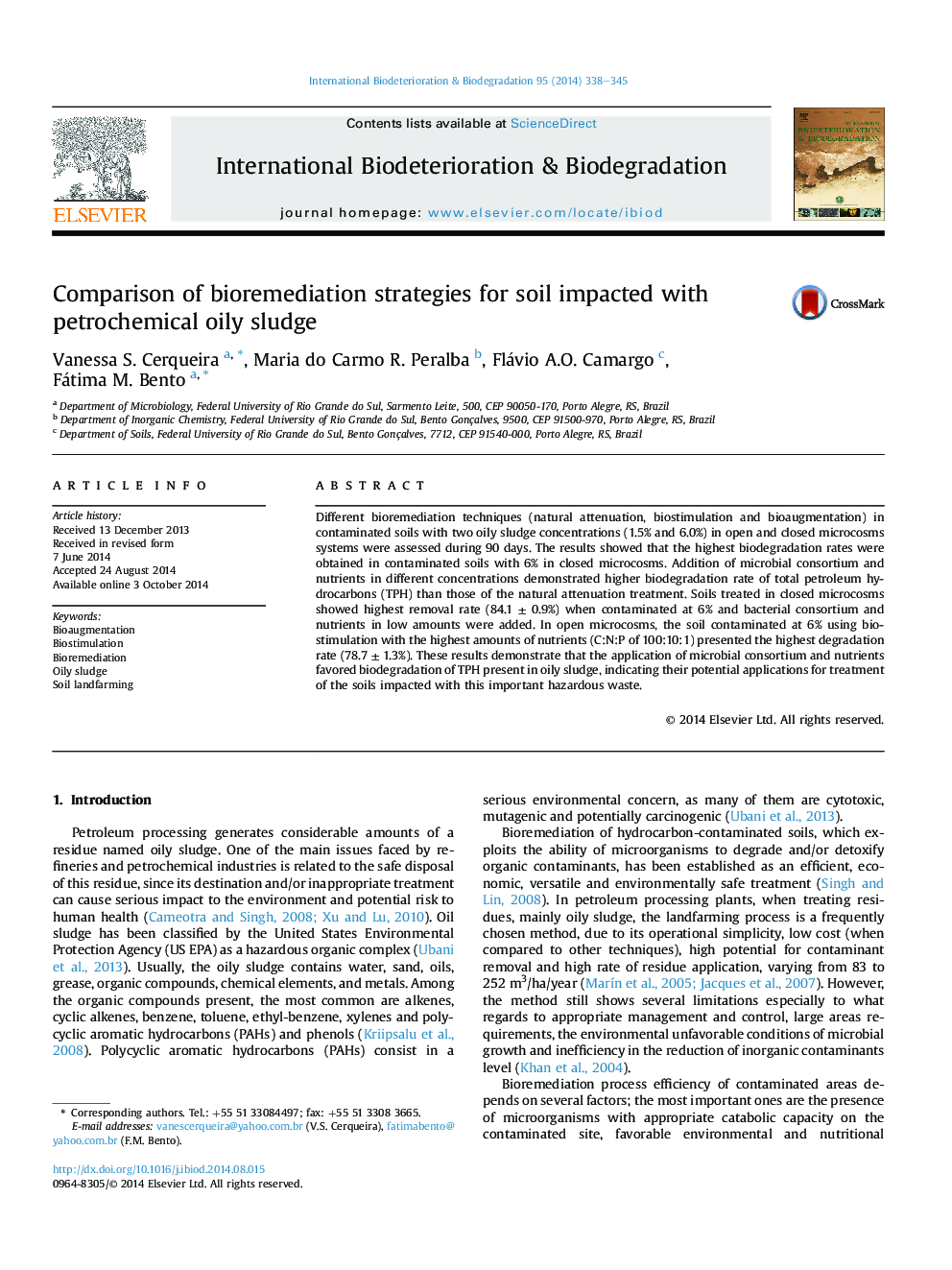| Article ID | Journal | Published Year | Pages | File Type |
|---|---|---|---|---|
| 4364694 | International Biodeterioration & Biodegradation | 2014 | 8 Pages |
•Bioremediation techniques were compared in soils contaminated with oily sludge.•Different systems and concentrations of the oily sludge were analyzed.•Higher biodegradation rates were obtained at contamination 6% in microcosms closed.•Nutrients and pre-selected microbial consortium increased the biodegradation rate.
Different bioremediation techniques (natural attenuation, biostimulation and bioaugmentation) in contaminated soils with two oily sludge concentrations (1.5% and 6.0%) in open and closed microcosms systems were assessed during 90 days. The results showed that the highest biodegradation rates were obtained in contaminated soils with 6% in closed microcosms. Addition of microbial consortium and nutrients in different concentrations demonstrated higher biodegradation rate of total petroleum hydrocarbons (TPH) than those of the natural attenuation treatment. Soils treated in closed microcosms showed highest removal rate (84.1 ± 0.9%) when contaminated at 6% and bacterial consortium and nutrients in low amounts were added. In open microcosms, the soil contaminated at 6% using biostimulation with the highest amounts of nutrients (C:N:P of 100:10:1) presented the highest degradation rate (78.7 ± 1.3%). These results demonstrate that the application of microbial consortium and nutrients favored biodegradation of TPH present in oily sludge, indicating their potential applications for treatment of the soils impacted with this important hazardous waste.
